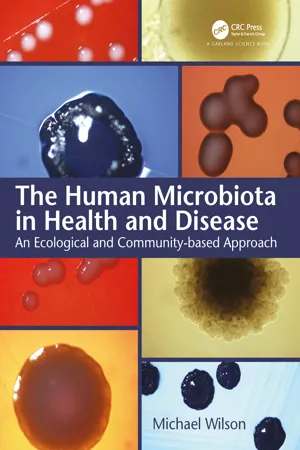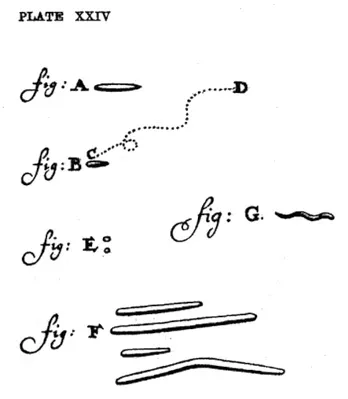
The Human Microbiota in Health and Disease
An Ecological and Community-based Approach
- 472 pages
- English
- ePUB (mobile friendly)
- Available on iOS & Android
The Human Microbiota in Health and Disease
An Ecological and Community-based Approach
About this book
A human being consists of a mammalian component and a multiplicity of microbes, collectively referred to as the "microbiota" or "microbiome," with which it has a symbiotic relationship. The microbiota is comprised of a variety of communities, the composition of each being dependent on the body site it inhabits. This community variation arises because the numerous locations on a human being provide very different environments, each of which favors the establishment of a distinct microbial community. Each community consists of bacteria, fungi and viruses with, in some cases, archaea and/or protozoa.
It is increasingly being recognized that the indigenous microbiota plays an important role in maintaining the health of its human host. However, changes in the overall composition of a microbial community at a body site, or an increase in the proportion of a particular species in that community, can result in disease or other adverse consequences for the host.
The Human Microbiota in Health and Disease: An Ecological and Community-Based Approach describes the nature of the various communities inhabiting humans as well as the important roles they play in human health and disease. It discusses techniques used to determine microbial community composition and features a chapter devoted to the many factors that underlie this mammalian–microbe symbiosis. Uniquely, the book adopts an ecological approach to examining the microbial community's composition at a particular body site and why certain factors can shift a community from a eubiotic to a dysbiotic state.
The book is for undergraduates and postgraduates on courses with a module on the indigenous microbiota of humans. It will also be useful to scientists, clinicians, and others seeking information on the human microbiota and its role in health and disease.
Frequently asked questions
- Essential is ideal for learners and professionals who enjoy exploring a wide range of subjects. Access the Essential Library with 800,000+ trusted titles and best-sellers across business, personal growth, and the humanities. Includes unlimited reading time and Standard Read Aloud voice.
- Complete: Perfect for advanced learners and researchers needing full, unrestricted access. Unlock 1.4M+ books across hundreds of subjects, including academic and specialized titles. The Complete Plan also includes advanced features like Premium Read Aloud and Research Assistant.
Please note we cannot support devices running on iOS 13 and Android 7 or earlier. Learn more about using the app.
Information


Table of contents
- Cover
- Half Title
- Title Page
- Copyright Page
- Dedication
- Contents
- Preface
- Author
- Abbreviations used for Microbial Genera
- Glossary
- Chapter 1: The Human Microbiota—A Historical and Methodological Overview
- Chapter 2: The Human–Microbe Symbiosis
- Chapter 3: The Indigenous Microbiota of the Skin
- Chapter 4: The Indigenous Microbiota of the Respiratory System
- Chapter 5: The Indigenous Microbiota of the Genitourinary System of Males
- Chapter 6: The Indigenous Microbiota of the Urinary System of Females
- Chapter 7: The Indigenous Microbiota of the Reproductive System of Females
- Chapter 8: The Indigenous Microbiota of the Oral Cavity
- Chapter 9: The Indigenous Microbiota of the Gastrointestinal Tract
- Chapter 10: Microbial Community Disruption—A Role in Other Human Diseases?
- Chapter 11: The Indigenous Microbiota of Humans—Where Are We Now and Where Should We Be Going?
- Appendix 1: Human Antimicrobial Peptides and Proteins
- Appendix 2: Distinguishing Characteristics of Those Genera That Are Frequently Mentioned in This Book
- Index